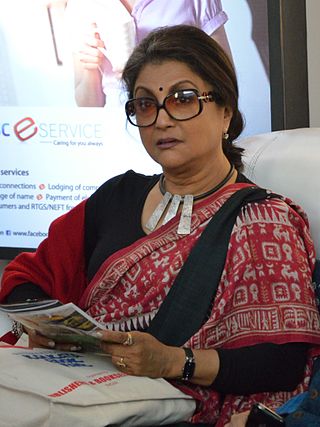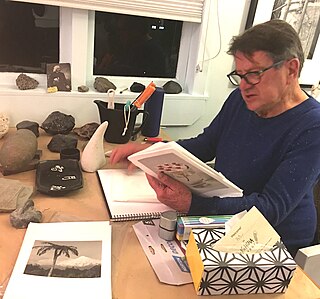
Phar Lap was a champion Australasian Thoroughbred racehorse. Achieving incredible success during his distinguished career, his initial underdog status gave people hope during the early years of the Great Depression. He won the Melbourne Cup, two Cox Plates, the Australian Derby, and 19 other weight-for-age races.

Anna Jacoba Westra, known as Ans Westra, was a Dutch-born New Zealand photographer, well known for her depictions of Māori life in the 20th century. Her prominence as an artist was amplified by her controversial 1964 children's book Washday at the Pa.

Washday at the Pa is a New Zealand illustrated children's book by photographer Ans Westra that describes a day in the lives of a rural Māori family. The book was first published by the government Department of Education in 1964 and distributed to primary schools as a bulletin.
New Zealand photography first emerged in the mid-nineteenth century, and over time has become an important part of New Zealand art. A number of photography associations exist to support photographers in New Zealand.

The Museum of New Zealand Te Papa Tongarewa is New Zealand's national museum and is located in Wellington. Usually known as Te Papa, it opened in 1998 after the merging of the National Museum of New Zealand and the National Art Gallery. An average of more than 1.5 million people visit every year, making it the 26th-most-visited art gallery in the world. Te Papa operates under a bicultural philosophy, and emphasises the living stories behind its cultural treasures.

Aparna Sen is an Indian film director, screenwriter and actress who is known for her work in Bengali cinema. She has received several accolades as an actress and filmmaker, including nine National Film Awards, five Filmfare Awards East and thirteen Bengal Film Journalists' Association Awards. For her contribution in the field of arts, the Government of India honoured her with Padma Shri, the country's fourth highest civilian award.
John Brian Brake was a photographer from New Zealand.

Rita Angus, known as Rita Cook early in her career, was a New Zealand painter who, alongside Colin McCahon and Toss Woollaston, is regarded as one of the leading figures in twentieth-century New Zealand art. She worked primarily in oil and watercolour, and became known for her portraits and landscapes.

Paratene Temokopuorongo Matchitt was a New Zealand sculptor and painter, known for combining traditional Māori art forms with those of modernist art. His work also references events from New Zealand history, particularly the Māori prophetic movements of the nineteenth century and most specifically Te Kooti.

Shigeyuki "Yuki" Kihara is an interdisciplinary artist of Japanese and Samoan descent. In 2008, her work was the subject of a solo exhibition at the Metropolitan Museum of Art in New York; it was the first time a New Zealander and the first time a Pacific Islander had a solo show at the institution. Titled Shigeyuki Kihara: Living Photographs, the exhibition opened from 7 October 2008 to 1 February 2009. Kihara's self-portrait photographs in the exhibitions included nudes in poses that portrayed colonial images of Polynesian people as sexual objects. Her exhibition was followed by an acquisition of Kihara's work for the museum's collection.

Hawaiian feather helmets, known as mahiole in the Hawaiian language, were worn with feather cloaks. These were symbols of the highest rank reserved for the men of the aliʻi, the chiefly class of Hawaii. There are examples of this traditional headgear in museums around the world. At least sixteen of these helmets were collected during the voyages of Captain Cook. These helmets are made from a woven frame structure decorated with bird feathers and are examples of fine featherwork techniques. One of these helmets was included in a painting of Cook's death by Johann Zoffany.
Te Uenuku, or simply Uenuku, is an early Māori carving housed at Te Awamutu Museum in the North Island of New Zealand. Te Uenuku represents Uenuku, a tribal atua of war who manifests as a rainbow. The taonga is of extreme significance both to the local Tainui people and also for its archaeological value.
Philip Anthony Clairmont (1949–1984) was a New Zealand painter.

Fiona Dorothy Pardington is a New Zealand artist, her principal medium being photography.
Ian Christopher Scott was a New Zealand painter. His work was significant for pursuing an international scope and vision within a local context previously dominated by regionalist and national concerns. Over the course of his career he consistently sought to push his work towards new possibilities for painting, in the process moving between abstraction and representation, and using controversial themes and approaches, while maintaining a highly personal and recognisable style. His work spans a wide range of concerns including the New Zealand landscape, popular imagery, appropriation and art historical references. Scott's paintings are distinctive for their intensity of colour and light. His approach to painting is aligned with the modernist tradition, responding to the formal standards set by the American painters Morris Louis, Kenneth Noland and Jules Olitski.
Glenn Nigel Jowitt was a New Zealand photographer who specialized in the people and cultures of the Pacific Islands and the communities of Pacific Island descent in New Zealand. He published more than 70 books and booklets throughout his career, including Pacific Images in 1987, Pacific Island Style in 1999, Feasts and Festivals in 2002, and Pacific Pattern in 2005.

Vivian Isabella Lynn was a New Zealand artist.

Anne Lysbeth Noble is a New Zealand photographer and Distinguished Professor of Fine Art (Photography) at Massey University's College of Creative Arts. Her work includes series of photographs examining Antarctica, her own daughter's mouth, and our relationship with nature.
This is a timeline of the feminist art movement in New Zealand. It lists important figures, collectives, publications, exhibitions and moments that have contributed to discussion and development of the movement. For the indigenous Māori population, the emergence of the feminist art movement broadly coincided with the emergence of Māori Renaissance.

Peter Chanel Peryer was a New Zealand photographer. In 2000, he was one of the five inaugural laureates of the Arts Foundation of New Zealand.












